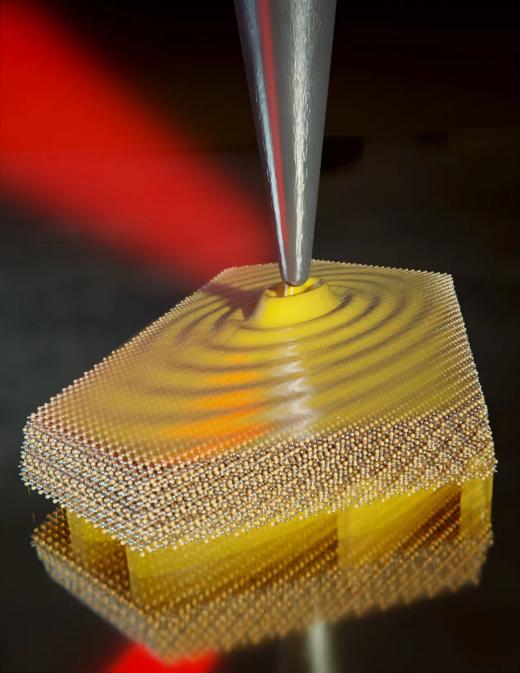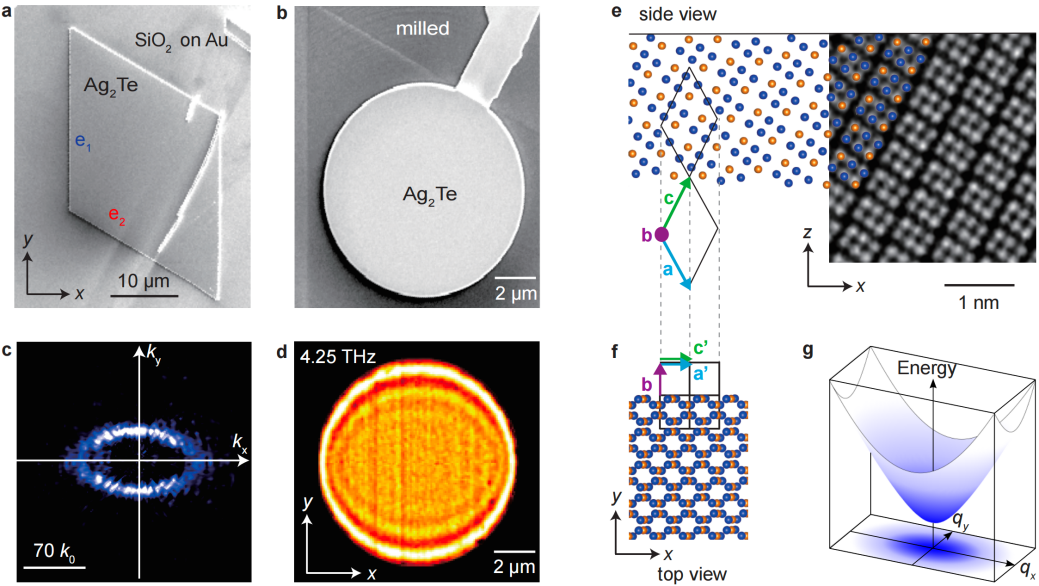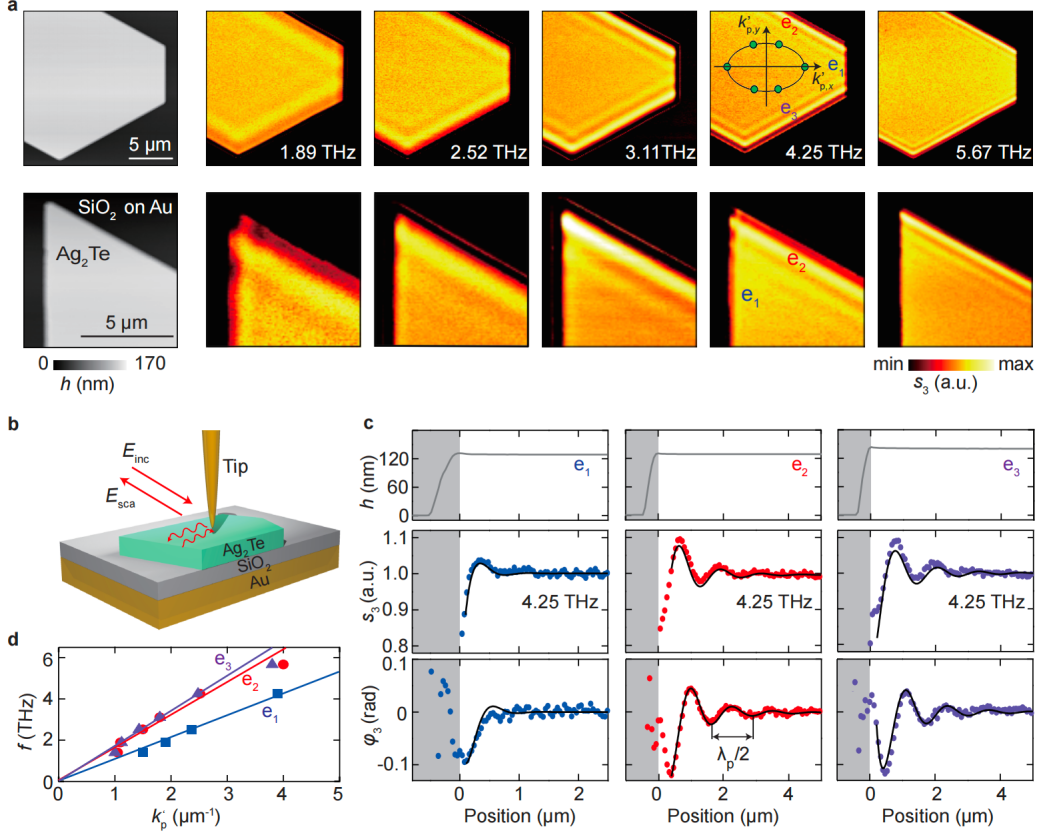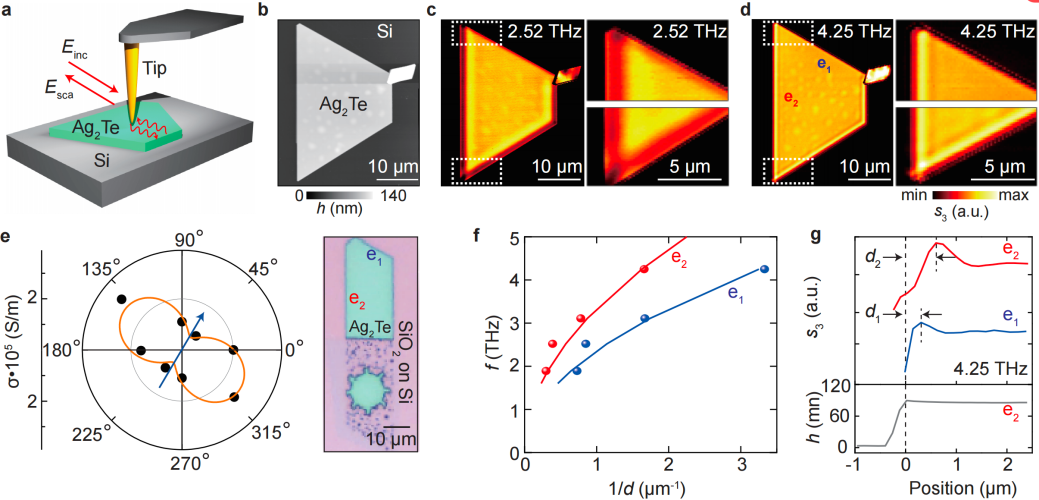Recently, Prof. Chen Shu from School of Optical-electrical and Computer Engineering published a paper titled “Real-space observation of ultraconfined in-plane anisotropic acoustic terahertz plasmon polaritons” in Nature Materials (IF:47.656). USST was the first unit to work together with researchers from CIC nano GUNE and Fudan University to carry out some real-space observations of ultraconfined in-plane anisotropic acoustic terahertz plasmon polaritons.
Polaritons are electromagnetic waves formed by strong coupling between light and dipolar matter excitations such as plasmons, phonons or excitons. They attract wide attention due to their ability to confine and guide light at the nanometre scale, promising the development of ultrasmall resonators and waveguides for sensing, heat transfer and optical circuitry applications. The control and manipulation of polaritons can be largely expanded with naturally anisotropic materials, as the strong light confinement can be accompanied by negative phase velocities, highly directional propagation or exotic wavefront shapes.
They observed in-plane anisotropic PPs in the monoclinic semiconductor Ag 2 Te by real-space THz nanoimaging. They found that their confinement and relative propagation length can be increased through the fabrication of Ag 2Te/spacer/metal hetero structures, whereas the in-plane anisotropic propagation characteristic remains. These in-plane anisotropic APPs manifest multiple spatial signal oscillations even for polariton amplitude decay times as short as about 0.2 ps, which—from a general perspective—is critically important for exploiting in-plane anisotropic PPs for future on-chip circuitry applications or for room-temperature measurements of in-plane materials properties such as directional effective charge carrier masses and charge carrier damping. The strong field concentration of APPs, particularly in the gap between the polaritonic layer and metal surface, may be exploited for field-enhanced molecular sensing or for boosting (ultra)strong THz light–matter coupling with molecules 48, classical 2D electron gases 49 or quantum materials.
The work wins the support from the National Natural Science Foundation of China and the Science and Technology Commission of Shanghai Municipality.




Link to the paper: https://www.nature.com/articles/s41563-023-01547-8


